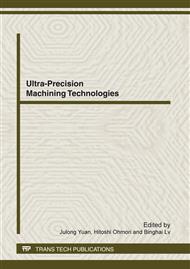p.99
p.105
p.110
p.115
p.121
p.126
p.132
p.137
p.142
Transient Heat Transfer Simulation in Rapid Heat Cycle Molding with Electric Heating
Abstract:
The demand of high quality for plastic products has facilitated the development of Plastic Injection Molding Technology, many new sorts of methods were created to improve the surface quality of plastic products, such as Rapid Heat Cycle Molding. But the temperature response law hasn’t figured out yet, and the influence elements of this process haven’t been clear, which seriously delay the appliction of Rapid Heat Cycle Molding.
Info:
Periodical:
Pages:
121-125
Citation:
Online since:
April 2012
Authors:
Keywords:
Price:
Сopyright:
© 2012 Trans Tech Publications Ltd. All Rights Reserved
Share:
Citation:


